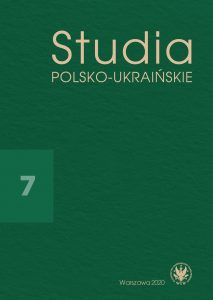Jacek Szymala, Powstanie kozackie 1648–1658. Studium z historii wizualnej, seria „Historia w mediach”, t. 2, red. prowadzący Jacek Szymala, red. serii Ewa Kowalczyk, Piotr Kurpiewski, Księgarnia Akademicka, Kraków 2019, 351 ss.
Jacek Szymala, Cossack Uprising 1648–1658. A Study of Visual History, series "History in the media", vol. 2, edited by Jacek Szymala, editor of the series Ewa Kowalczyk, Piotr Kurpiewski, Akademicka Bookshop, Krakow 2019, 351 pp.
Author(s): Teresa Chynczewska-Hennel, Mariusz Robert DrozdowskiSubject(s): Media studies, Visual Arts, Book-Review, Film / Cinema / Cinematography, History of Art
Published by: Wydział Lingwistyki Stosowanej Uniwersytetu Warszawskiego
Keywords: Zaporozhian Cossacks; Khmelnytsky Uprising; movie; computer games; visual art;
Summary/Abstract: The position deserves attention, as it opens a discussion on the important phenomenon of visual culture history, which is currently widely discussed among many researchers. A historian, even if he is not an art historian, oft en analyses iconographic art in his work. After all, we are dealing with a different type of perception of the described reality, one which accumulates the ability to synthetically capture it using at the same time both the historian’s and film expert’s skills. Jacek Szymala sets himself an ambitious goal – to create a model, “a set of tools helpful in the future research of historians, especially modern historians, going beyond traditional historiography”. The author brilliantly shows that history is not only a collection of past facts and events but lives in its visual dimension, becoming a continuation of history itself. It is only important that, as far as possible, every viewer or reader can and should remain exactly as critical as in the process of interpretation of any historical source that “lies on the table” in the workshop of a good and reliable historian. The author is absolutely right when he writes that: “[...] these monuments, skulls, or paintings should serve as a warning and reflection, and not be the cause of mutual hatred, stereotyping, and prejudices”. Jacek Szymala’s book will definitely serve future researchers of this fascinating topic.
Journal: Studia Polsko-Ukraińskie
- Issue Year: 2020
- Issue No: 7
- Page Range: 268-279
- Page Count: 12
- Language: Polish

